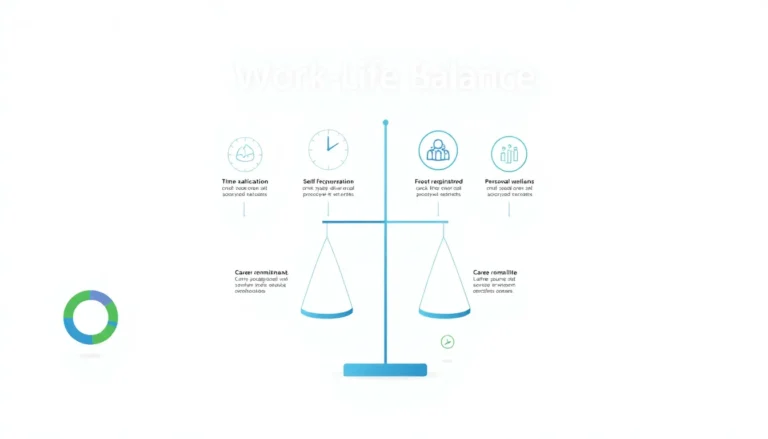Table of Contents
ToggleImagine a world where teachers don’t just survive their careers but thrive in them. While it might seem like an impossible dream, achieving a work-life balance is entirely within reach. Yes, you heard that right. Teachers often find themselves juggling lesson plans, grading papers, and managing teenagers’ daily dramas, all while trying to maintain a semblance of personal life. It’s a constant balancing act. In this text, we’ll explore how teachers can reclaim their time and energy, ensuring they find joy both in and out of the classroom. Let’s jump into the intriguing realm of teachers and balance, or the lack thereof.
Understanding Work Life Balance for Teachers

For educators, work-life balance can feel like trying to catch smoke with a net. The term refers to the equilibrium between personal life and professional responsibilities. Teachers are passionate creatures, often pouring their hearts into their work. But, when the weight of grading, preparing lessons, and classroom management exceeds personal well-being, educators risk burnout. It’s essential to grasp what work-life balance truly means. For teachers, it involves not just a split between work hours and personal time, but also ensuring mental and emotional health remains a priority. To achieve this balance, it’s crucial for educators to set boundaries, prioritize self-care, and seek support when needed.
The Importance of Work Life Balance
Work-life balance isn’t just a catchy phrase: it’s a lifeline for teachers. When educators achieve this balance, they experience increased job satisfaction, enhanced productivity, and a deeper connection to their students. Think about it: a happy teacher makes for a happier classroom. Also, when teachers invest in their well-being, they model positive behaviors for their students. This creates a ripple effect, demonstrating the importance of self-care and balance to the next generation. Eventually, prioritizing work-life balance contributes not only to the teachers’ well-being but also nourishes a healthier school environment.
Challenges to Achieving Work Life Balance
Teachers face a unique set of challenges that complicate their quest for work-life balance. Long hours spent preparing lessons and grading can encroach upon personal time. Also, high-stakes testing and administrative requirements often add to their stress. The emotional labor involved in supporting students, especially those struggling with personal issues, can also take its toll. Let’s not forget the modern-day classroom, which frequently includes new technology and approaches that require constant adaptation. All of these factors create a perfect storm, making it hard for teachers to find that elusive balance they crave.
Strategies for Improving Work Life Balance
Improving work-life balance is a journey rather than a one-time fix. Teachers can carry out several strategies to nurture their own well-being. First, establishing clear boundaries can go a long way. Whether it’s committing to not checking work emails after a certain time or designating specific times for grading, these boundaries help teachers reclaim personal time. Incorporating self-care routines, whether an evening walk, a favorite TV show, or yoga, can recharge their batteries. Collaboration with colleagues can also bear fruit. Sharing resources and ideas can lighten the workload, enabling teachers to focus on what truly matters: their students and personal lives.
School Policies That Support Teachers’ Wellbeing
School policies play a crucial role in supporting teachers’ well-being. Administrations should prioritize creating a culture that encourages work-life balance. This can be achieved by offering professional development opportunities that align with personal goals, ensuring teachers have access to mental health resources, and promoting flexible scheduling where feasible. Also, providing adequate planning periods can offer teachers the necessary time to manage their workload without sacrificing personal time. Schools that foster open communication between staff and administration tend to build a more supportive and balanced work environment.
The Role of Professional Development in Work Life Balance
Professional development is not just about enhancing teaching skills: it can also improve work-life balance. Continuous learning enables teachers to adopt more effective teaching strategies and classroom management techniques, eventually reducing stress and workload. When educators feel empowered and equipped with the right tools, they are more confident in their abilities, leading to a more balanced professional life. Schools that invest in comprehensive professional development programs often see higher teacher retention rates and a more positive school culture.







